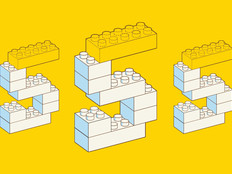4 Drivers of IT Investments on the Connected Campus
Investments in networking upgrades and other connected campus solutions don’t just make colleges and universities more attractive to prospective students. They also help faculty and staff improve learning outcomes, drive revenue, cuts costs and prepare their campuses for future technologies.
Here are some of the top drivers and benefits of connected campus initiatives.
1. Students’ Demand for Bandwidth Continues to Grow
Although virtually every institution has invested in both wired and wireless networks in recent years, it’s nearly impossible to keep up with the growing demands that students place on IT resources. According to the “2017 State of ResNet Report” from ACUTA and ACUHO-I, 87 percent of campuses offer robust wireless coverage in the vast majority of academic spaces, such as classrooms and study areas. In outdoor spaces adjacent to residence halls, such as courtyards and parks, however, adoption has decreased, with the percentage of campuses offering robust Wi-Fi in the vast majority of such spaces dropping from 20 percent to 12 percent between 2014 and 2017.
Among institutions adopting or expanding connected campus technologies, 43 percent say student retention is a top driver of their investments, according to a 2017 study by the Center for Digital Education.
2. Connected Campuses Are More Cost-Effective
In the Center for Digital Education study, the top spot on the list of connected campus technology drivers goes to the “potential for cost savings,” a priority for 48 percent of institutions. Another 21 percent are motivated by reduced facilities costs and better resource utilization, and 15 percent see potential for increased revenue in such investments. The fact that money is at the forefront of so many administrators’ minds illustrates the extent to which organizational thinking around IT has evolved. IT shops were once seen primarily as a cost center at many institutions, but administrators are now taking a more strategic approach to technology.
3. Tech-Enhanced Learning Improves Student Outcomes
The day-to-day management tasks of an IT shop can feel disconnected from student learning, but in fact, the entire point of campus technology is to support students’ academic success. In fact, EDUCAUSE named “student success” the No. 2 IT issue facing institutions in 2018. In the Center for Digital Education study, 38 percent of institutions listed improved student learning outcomes among their top drivers of connected campus technologies.
Simply giving students fast and reliable internet access — across campus and on any device — is an important step toward enabling student success. More than ever, students are taking charge of their own learning by seeking out reputable resources on the web. But tools that help students collaborate are also important, including cloud-based services and apps that let students and educators access and contribute to shared workspaces.
4. Colleges Are Preparing for the Internet of Things
While students are responsible for much of the demand on IT networks today, much of tomorrow’s demands will stem from the Internet of Things. Institutions that don’t work to build out network capacity now may find themselves lagging. Already, according to the Center for Digital Education study, fewer than a quarter (23 percent) of IT administrators say their current computing infrastructure can sustain connected campus activities for the next five years.
Early IoT use cases, such as smart buildings initiatives, have largely centered around tracking data in the physical environment to arrive at insights that help organizations optimize operations. However, in the higher education edition of its 2017 “Horizon Report,” the New Media Consortium points to emerging research on student-focused IoT use cases. Future applications may include wearables that monitor biological factors corresponding to students’ emotional states and sensors that track students’ skeletal positions to identify correlations between different postures and learner engagement.
To learn more about how to make the connected campus a reality, check out our white paper, "Building Blocks for the Connected Campus."








